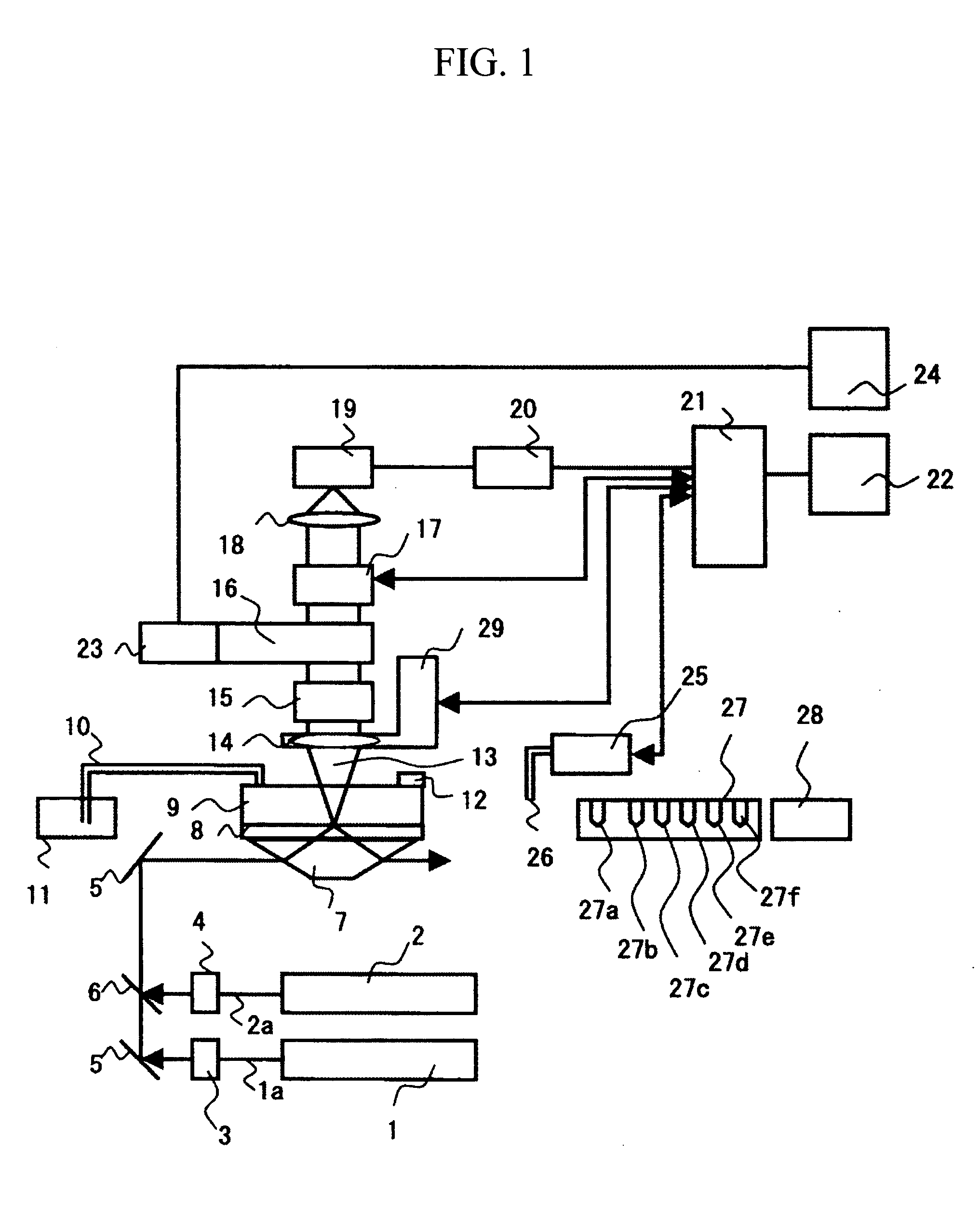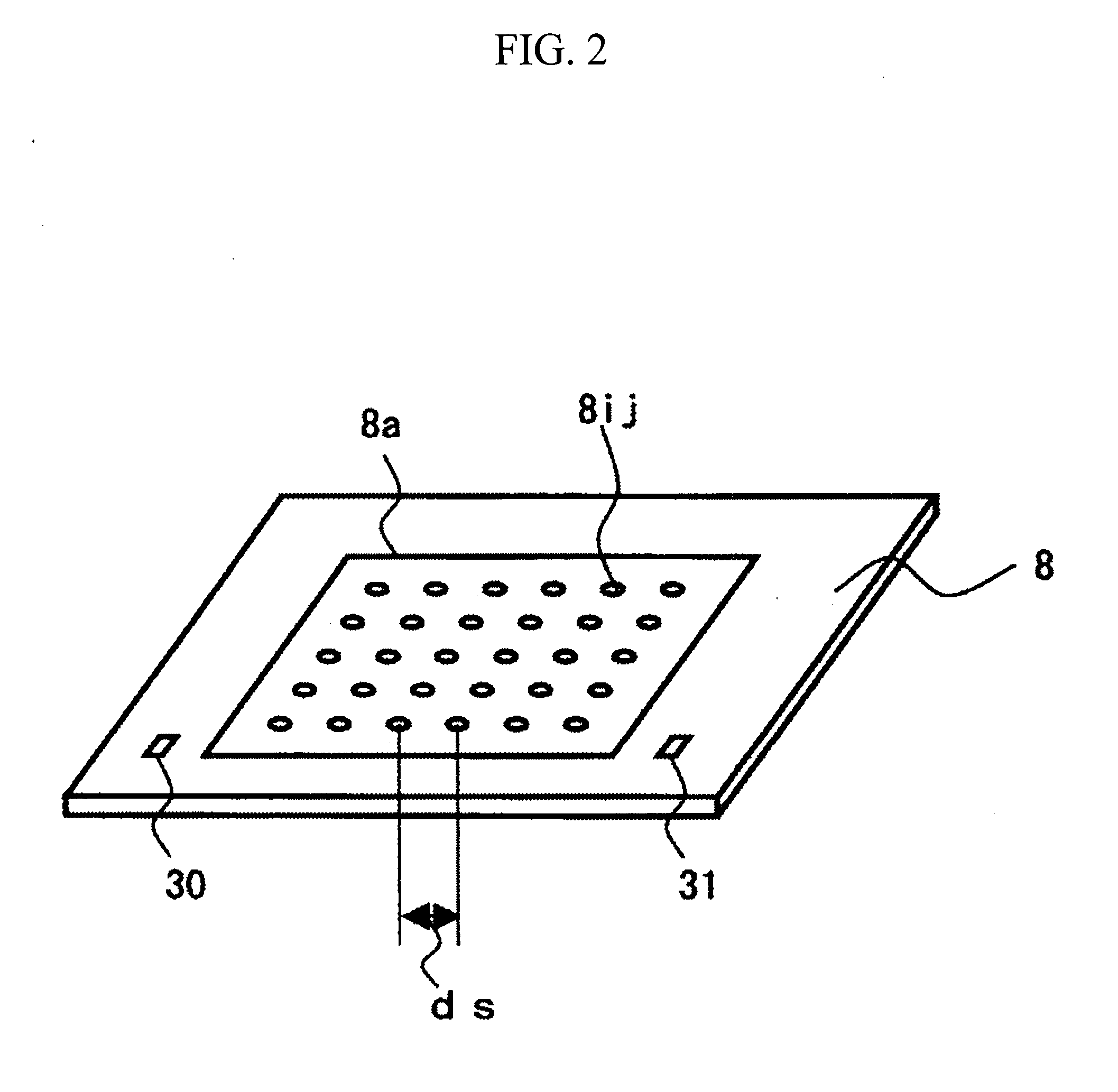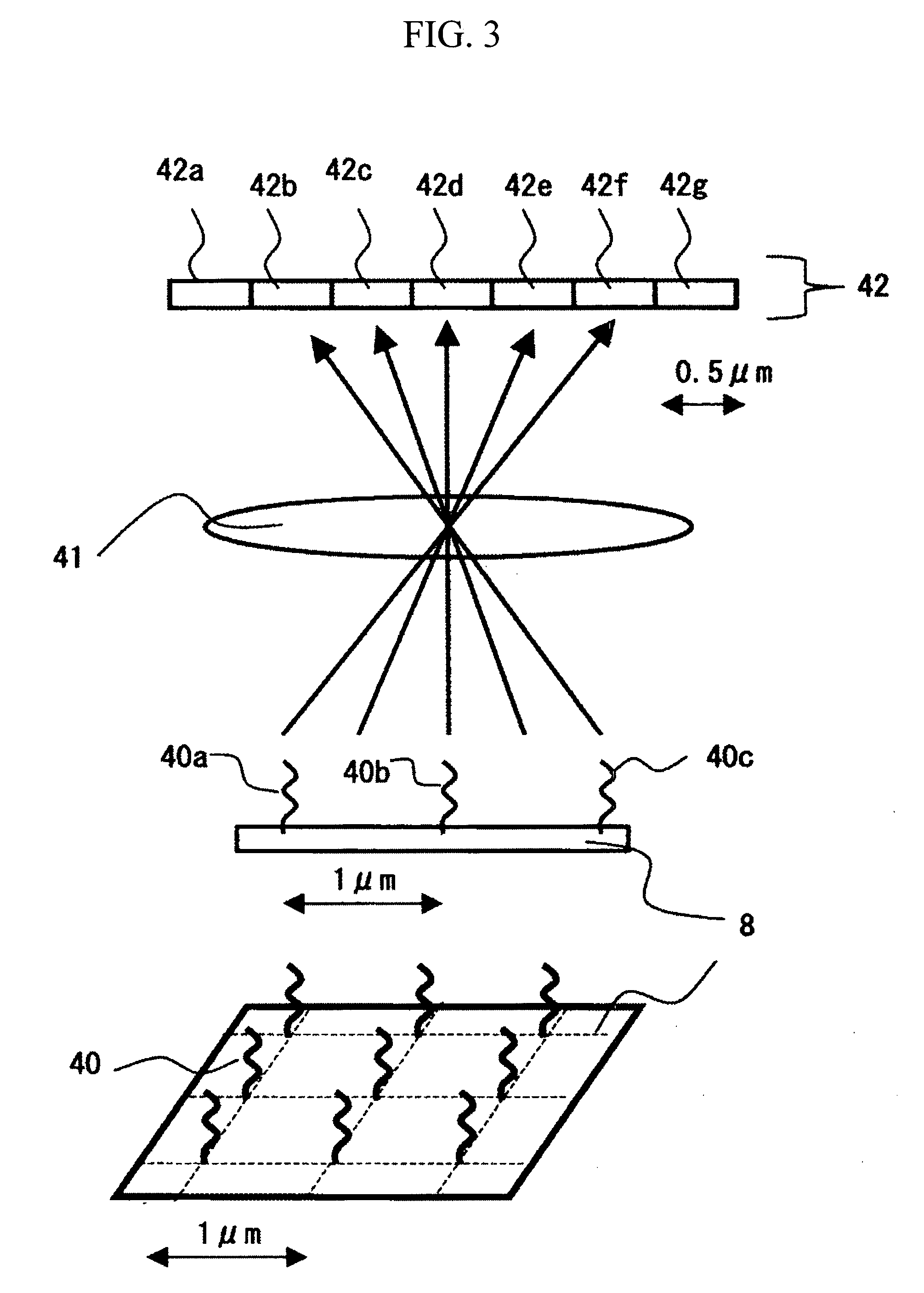Fluorescence analyzing method, fluorescence analyzing apparatus and image detecting method
a fluorescence analysis and image detection technology, applied in the field of image detection methods, can solve the problems of increasing system costs, affecting the detection speed, and requiring expensive two-dimensional sensors, so as to reduce the number of pixels required, and improve the detection speed.
- Summary
- Abstract
- Description
- Claims
- Application Information
AI Technical Summary
Benefits of technology
Problems solved by technology
Method used
Image
Examples
first embodiment
[0027]A description will be given of an apparatus and a method for sequencing fragments of sample DNA by equidistantly trapping, molecule by molecule, fragments of the sample DNA to be analyzed on a surface of a board; inducing extension for substantially every base; and then detecting, for one molecule at a time, captured fluorescence labels. Specifically, the apparatus and the method are used to perform sequencing of the sample DNA by repeating a cycle including the steps of: inducing a DNA polymerase reaction by using four types of dNTP derivatives with detectable labels, which are captured as substrates of DNA polymerase in template DNA, and which can terminate a DNA chain extension reaction, with the presence of a protecting group; then detecting the captured dNTP derivatives on the basis of fluorescence or the like; and then returning the dNTP derivatives to an extension-capable state. Incidentally, since the above operation is based on a method of single molecule fluorescence...
second embodiment
[0047]The apparatus according to the first embodiment is configured so that each single DNA molecule individually enters the region 8ij. However, the apparatus may be configured so that groups 51 of DNA molecules are spaced apart at regular intervals on a board 50, as shown in FIG. 5. In this case, plural molecules of the same DNA fragments are captured in each of the region 8ij. The base extension reaction needs almost all molecules to be extended similarly. Therefore, the measurement needs enough reactive time. In the second embodiment, the plural molecules exist in each of the region 8ij. Therefore, because fluorescent strength grows, it becomes easy to detect. Moreover, even if the reaction of some molecules doesn't proceed when tens of thousands of molecules are fixed to each of the region 8ij, the influence of the sequencing on accuracy is a little. Therefore, the system can be composed at a low cost.
third embodiment
[0048]Description will be given of an embodiment using another form of reaction region. FIG. 6 shows the structure of a board 60 according to the third embodiment. The board 60 has a structure including a reaction region 60a, plural regions 60ij which are formed in the reaction region 60a, and in which DNA is fixed, and an optically opaque mask 60b formed around the plural regions 60ij. Metal, such as aluminum or chromium, silicon carbide or the like, can be employed for a material of the mask. The material is formed into a thin film by vapor deposition or the like. Each region 60ij has a diameter of 100 nm or less. Methods for forming this opening in the mask 60b include vapor deposition using projection method (with which an appropriate mask is disposed between a deposition source and the board, to be subjected to vapor deposition), electron beam lithography and direct writing using photolithography.
[0049]The third embodiment makes it possible to achieve the same effects as those ...
PUM
| Property | Measurement | Unit |
|---|---|---|
| diameter | aaaaa | aaaaa |
| fluorescence analyzing | aaaaa | aaaaa |
| fluorescence measurement | aaaaa | aaaaa |
Abstract
Description
Claims
Application Information
 Login to View More
Login to View More - R&D
- Intellectual Property
- Life Sciences
- Materials
- Tech Scout
- Unparalleled Data Quality
- Higher Quality Content
- 60% Fewer Hallucinations
Browse by: Latest US Patents, China's latest patents, Technical Efficacy Thesaurus, Application Domain, Technology Topic, Popular Technical Reports.
© 2025 PatSnap. All rights reserved.Legal|Privacy policy|Modern Slavery Act Transparency Statement|Sitemap|About US| Contact US: help@patsnap.com



